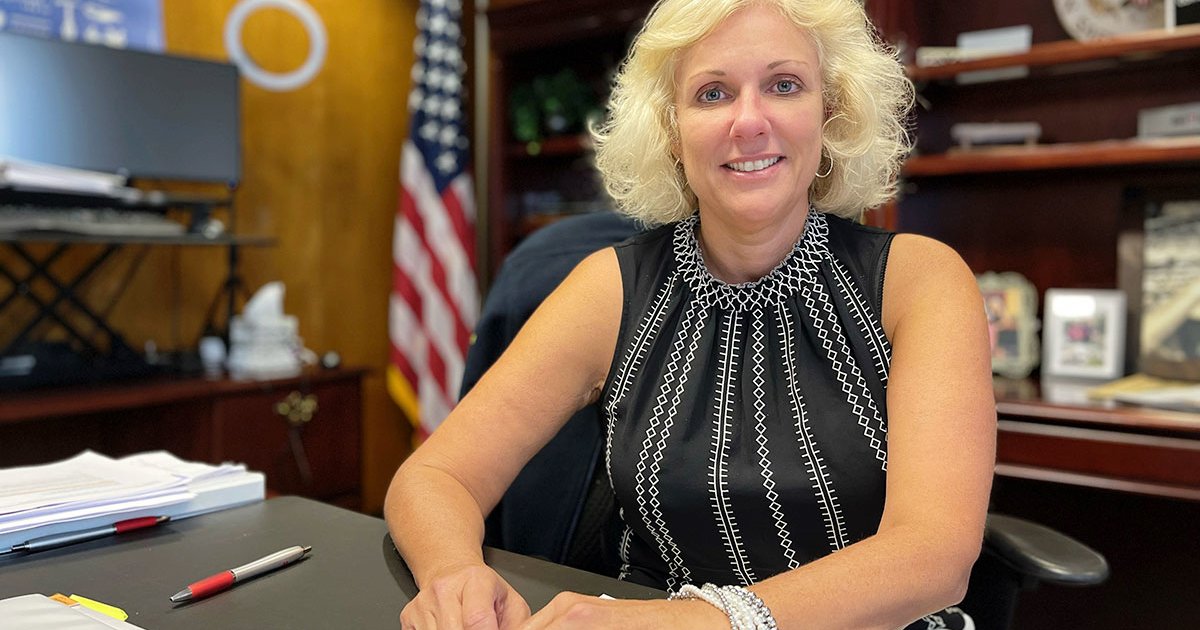
WASHINGTON — When news broke this month that NHTSA chief Steven Cliff was leaving the agency to run the California Air Resources Board less than three months after being confirmed by the U.S. Senate, Jennifer Homendy said she was “disappointed.”
“I am concerned for the agency,” said Homendy, chair of the National Transportation Safety Board, the independent federal agency tasked with investigating the nation’s accidents. “I don’t want to see the agency without a leader.”
Cliff’s departure next month comes as U.S. traffic deaths continue to surge. In the first three months of 2022, NHTSA estimated 9,560 people died in vehicle crashes — the highest number of deaths between January and March in 20 years.
For Homendy, the uptick in fatal car crashes is alarming — and also personal. In November, the NTSB chief was rear-ended by an SUV traveling at about 45 mph. She left her vehicle — a Subaru Crosstrek equipped with advanced safety features — with a bruise on her arm and a concussion.
Homendy, 50, met with Staff Reporter Audrey LaForest last week at NTSB headquarters to discuss ways to improve roadway safety. Here are edited excerpts.
Q: What do you make of the latest traffic fatality estimates?
A: We know what some of the contributing factors are to the increase, like impaired driving or speeding or distraction. I think the question “why has it increased?” is a more difficult one. Whatever the reason is, it is still preventable, and that’s the key.
What can the auto industry and the federal government do to make U.S. roads — and vehicles — safer?
When you’re the head of a federal agency that does all the modes, you get to see how the different modes handle safety differently, and in no other mode of transportation do we focus on a single point of failure. We can’t just focus on the human. We have to focus on everything else to prevent that death, whether it’s in the vehicle or outside the vehicle. It’s looking at our roads. It’s looking at speeds. It’s looking at even how we address road safety in general, on the federal government level and on the state government level.
You were involved in a vehicle crash in November. How has that reframed your work at the NTSB?
It was a hard impact. I was looking in my rearview mirror and saw him coming and couldn’t go anywhere. I really thought I was not walking away, and I just braced. The police officer said something that will always stick with me. He said, “You know, we have a crash here every week,” and the tow truck guy said, “Keeps us in business.” I thought: That’s a system failure. If you have a crash here every week, that’s a system failure. Why isn’t anyone taking any action on that?
The NTSB has long advocated for the “Safe System” approach, which aims to eliminate death and serious injuries for all road users. How does this involve automakers?
There’s a responsibility for them when technology is available to help prevent these crashes. We know that technology is offered in Europe on intelligent speed adaptation. We’ve got driver-monitoring systems that are coming online. Automatic emergency braking, forward-collision warning, lane-departure warning, lane-keeping assist — all of those are safety technologies that can help prevent these crashes. Unfortunately, a lot of that technology is offered on the highest trim models. We have recommended that all that technology be standard when it comes to safety, and we’ll continue to recommend that.
Have you seen any efforts underway at the U.S. Department of Transportation to implement this approach?
Not on the NHTSA side. They have done some things around education. Recently, they had a speed campaign, but I haven’t seen what I’d like to see, which is implementing some standards for vehicle safety. Whether it’s performance standards or mandating certain technology or other safety standards, they need to get moving. I haven’t seen that comprehensive approach. What I’ve seen is the same old, same old.
Automakers are developing advanced driver-assistance systems in the absence of regulation and minimum performance standards. What does that mean for roadway safety?
It’s a problem. We have recommended to NHTSA that they develop performance standards — in particular, looking at driver disengagement. We have recommended that NHTSA take action on measuring driver engagement and figuring out a performance standard around that. They have not taken that action. We’ve also asked them to limit those vehicles to the conditions for which they should be operating. That’s called operational design domain. Our vehicles should not operate with Level 2 [driver-assist systems] in certain road conditions, in certain weather, on certain roads.